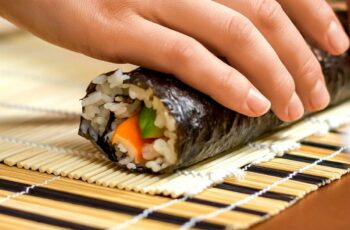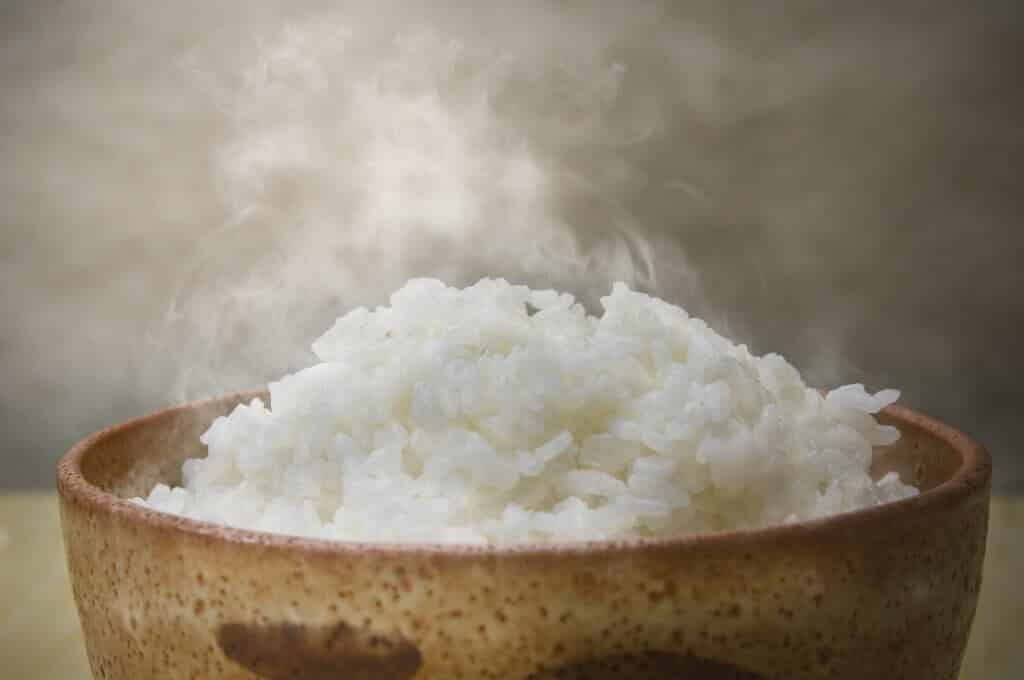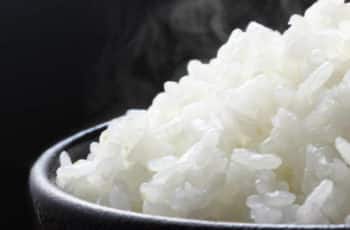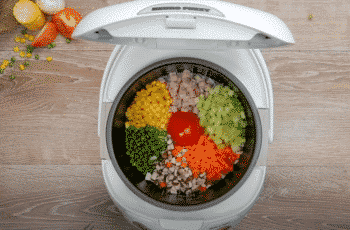Table of contents
Making sushi rice is a crucial step in preparing sushi, the beloved Japanese dish that has gained popularity worldwide. Sushi rice, also known as shari, is the foundation of any sushi roll, providing the perfect balance of flavor, texture, and stickiness. To create delicious and authentic sushi, it is essential to use the right type of rice and a combination of ingredients that are carefully measured and mixed. In this article, we’ll explore what type of rice is used for making sushi and the essential ingredients needed to make the perfect sushi rice.
I. Introduction
Sushi is a popular Japanese dish that has gained popularity worldwide. Sushi is a dish that consists of vinegared rice, raw or cooked seafood, vegetables, and other ingredients, all rolled up in a sheet of nori (seaweed). The rice used in making sushi is crucial to the dish’s taste and texture, making it important to use the right type of rice in making sushi.
II. What is sushi rice?
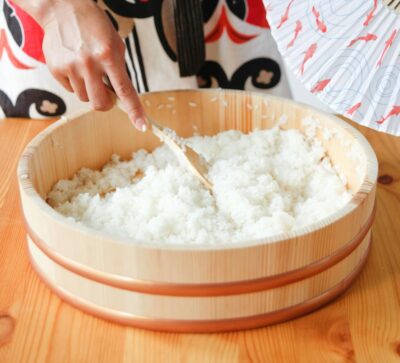
What type of rice is used to make sushi and its ingredients
Sushi rice is a short-grain, sticky rice that is specifically cultivated for making sushi. The grains of sushi rice are shorter, fatter, and more rounded than other types of rice, which makes it easier to handle and mold into different shapes.
The main difference between sushi rice and other types of rice is the high amount of amylopectin, a type of starch that gives sushi rice its characteristic stickiness. This stickiness is crucial in making sushi, as it helps the rice grains stick together and hold their shape.
High-quality sushi rice should have a slightly sweet, slightly acidic taste, and a pleasant aroma. When cooked, sushi rice should be slightly sticky, but not mushy or clumpy.
III. Ingredients used in making sushi rice
A. Rice vinegar Rice vinegar is a crucial ingredient in making sushi rice. It is made by fermenting rice wine and is used to flavor the rice and give it a slightly sour taste. Rice vinegar is milder and less acidic than other types of vinegar, making it perfect for use in sushi rice. The vinegar also helps to preserve the rice and prevent it from spoiling.
When choosing rice vinegar for making sushi rice, it is important to choose a high-quality, mild-tasting vinegar. The vinegar should be made specifically for sushi rice, and not a general-purpose vinegar.
B. Sugar Sugar is another essential ingredient in making sushi rice. It is added to the vinegar mixture to balance out the sourness of the vinegar and create a slightly sweet taste. The sugar also helps to enhance the flavor of the rice and make it more palatable.
When adding sugar to the vinegar mixture, it is important to use just the right amount. Too much sugar can make the rice too sweet and overpower the other flavors, while too little sugar can make the rice too sour.
C. Salt Salt is used to enhance the overall flavor of the rice and create a savory taste. The salt also helps to preserve the rice and prevent it from spoiling.
When adding salt to the vinegar mixture, it is important to use just the right amount. Too much salt can make the rice too salty and overpower the other flavors, while too little salt can make the rice bland.
D. Other ingredients While rice vinegar, sugar, and salt are the essential ingredients used in making sushi rice, there are other ingredients that can be added for additional flavor. Some sushi chefs add a small amount of mirin, a type of sweet Japanese rice wine, to the vinegar mixture to add a slightly sweet taste. Others may add a small amount of sake or soy sauce to the mixture for additional flavor.
It is also important to use high-quality water when making sushi rice. The water should be clean, free of impurities, and have a neutral pH. The quality of the water can affect the overall taste and texture of the rice.
IV. How to make sushi rice
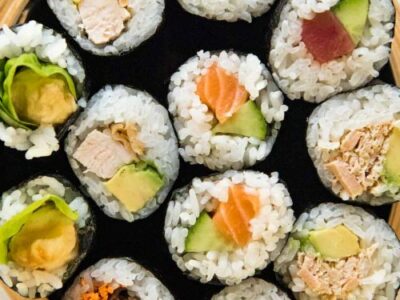
IV. How to make sushi rice
Making sushi rice is a simple process, but it requires careful attention to detail. To make sushi rice, start by rinsing the rice several times in cold water until the water runs clear. Then, combine the rice with water in a pot and bring it to a boil. Once it starts boiling, reduce the heat and let it simmer for around 20 minutes. After cooking the rice, it should be allowed to cool down for a few minutes before adding the vinegar mixture.
The vinegar mixture is made by combining rice vinegar, sugar, and salt in a saucepan and heating it until the sugar and salt dissolve. The vinegar mixture is then added to the cooked rice and mixed thoroughly until every grain is coated.
V. Other ingredients used in making sushi
In addition to sushi rice, there are several other ingredients used in making sushi. Nori is a type of dried seaweed that is used to wrap the sushi rolls. Wasabi is a type of Japanese horseradish that is added to the sushi rolls for a spicy kick. Soy sauce is used as a dipping sauce for the sushi, and pickled ginger is served as a palate cleanser between bites.
VI. Types of sushi
There are several types of sushi, but the most common types are nigiri, maki, and temaki. Nigiri sushi consists of a small mound of sushi rice topped with a slice of raw fish or other seafood. Maki sushi consists of sushi rice and other ingredients rolled up in a sheet of nori and sliced into bite-sized pieces. Temaki sushi is similar to maki sushi but is cone-shaped, with the nori wrapped around the rice and ingredients.
VII. Conclusion
Sushi rice is a crucial ingredient in making sushi, and using the right type of rice and preparing it properly is essential for making good sushi. The combination of sushi rice, vinegar, sugar, and salt creates a unique flavor and texture that is essential to the dish’s taste. By following the steps in making sushi rice and using high-quality ingredients, anyone can make delicious and authentic sushi at home.


